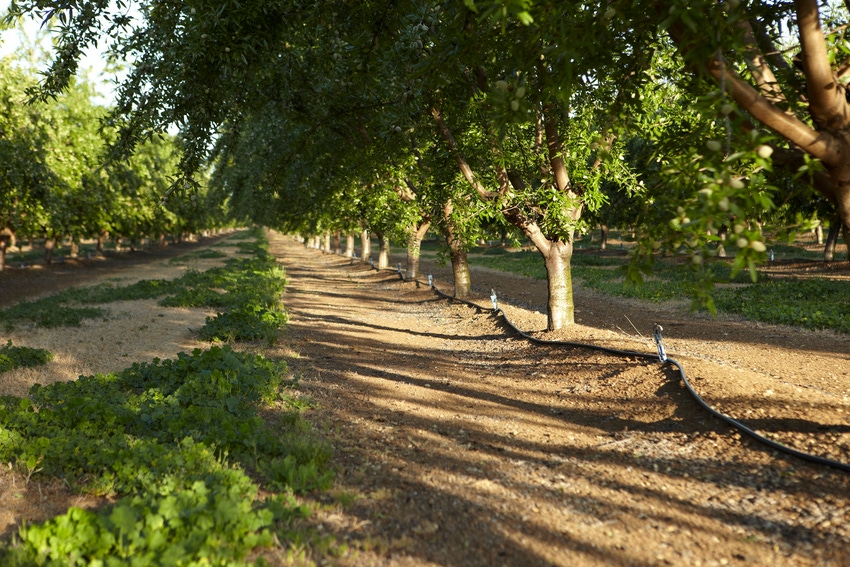May 1, 2017

Sponsored Content
The two important steps required for good irrigation water management are knowing how much water needs to be applied, and operating the irrigation system to apply that desired amount. With the many sophisticated tools and the technology available to almond growers to schedule irrigations according to tree demand, one of the most overlooked steps toward irrigation efficiency is system maintenance.
Successful irrigation scheduling depends on the performance of an irrigation system, particularly the uniformity of applications across the orchard, and therefore the efficiency of the system. And the surest path to knowing whether your system is performing efficiently is to conduct a distribution uniformity test, or DU.
“Understanding their system’s distribution uniformity can have a major impact on water use efficiency for almond growers,” said Spencer Cooper, senior manager for Irrigation and Water Efficiency, Almond Board of California (ABC). “A distribution uniformity test can help reveal areas in need of maintenance or system modification to reduce high- and low-water distribution points that develop over time — or could even be present in a newly installed system.”
Microsprinkler and drip irrigation systems should operate at 90 to 95 percent DU, which results in 29 percent less water needed to adequately irrigate, compared to a system that operates at 70 percent DU, according to Blake Sanden, UC Cooperative Extension irrigation farm advisor, Kern County.
Improving distribution uniformity not only prevents over-irrigating in one area, but also reduces stress to the trees that are under-irrigated, which can invite pests and other problems into the orchard. And, if a system with poor DU is operated to overcome under-watering in some areas, over-irrigation in other areas results in inefficient use of irrigation water.
“When trees are stressed they do not produce as many quality almonds as healthy trees,” said Dawn Brunmeier, a technical service representative for BASF. “Maintaining the overall plant health of a tree helps protect yield potential.”
Distribution uniformity is affected by pressure variations in the system, emitter clogging, slope of the land and other factors.
For drip systems, a basic “catch-can” test will measure how much water is being delivered by each emitter; this test will reveal whether distribution variability is caused by the irrigation system rather than other factors, such as soil type.
Measuring pressure in the lines of drip and microsprinkler systems provides an indication of overall system performance. A distribution uniformity test should be conducted every three years to diagnose any problems associated with pressure variability or emitter plugging; however, pressure readings should be taken even more frequently to identify whether a DU test is needed more often than once every three years.
Mobile irrigation labs are available to evaluate the performance of irrigation systems. These labs measure water application rates and pressures, which are key components that make up the distribution uniformity of your system. They will also give recommendations for possible improvement, if necessary. Your local Resource Conservation District may offer mobile lab services, and if it doesn’t, there are multiple private irrigation professionals who can also provide these tests.
Almond Board of California has invested heavily in irrigation efficiency, and has created the Almond Irrigation Improvement Continuum, a comprehensive manual of irrigation management and scheduling practices. Continuum Level 1.0 has been released as a PDF or EPUB at Almonds.com/Irrigation. Comprehensive information on understanding irrigation system performance, as well as all other aspects of irrigation management, are covered in detail.
About the Author(s)
You May Also Like




